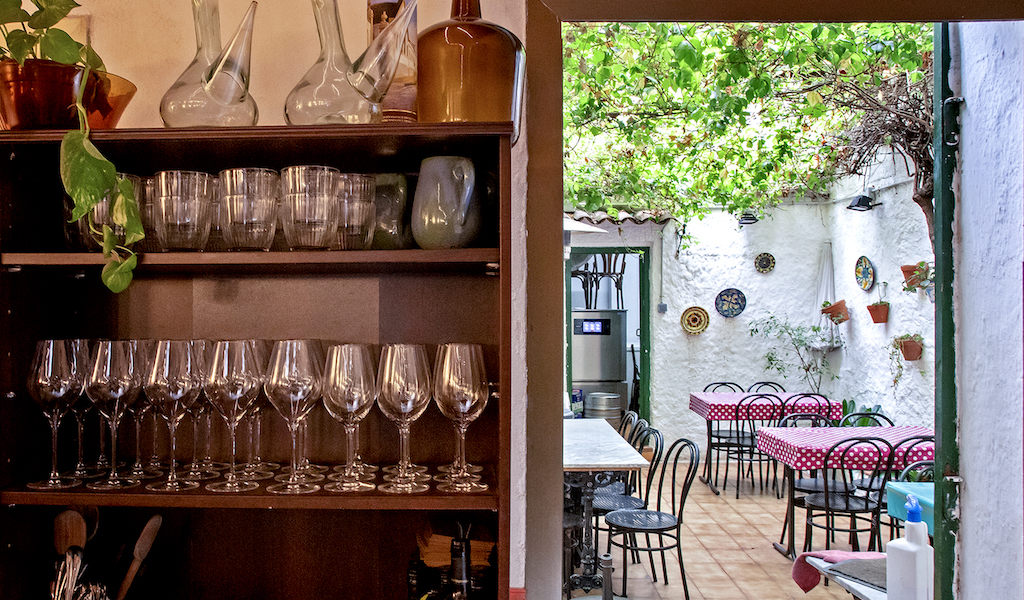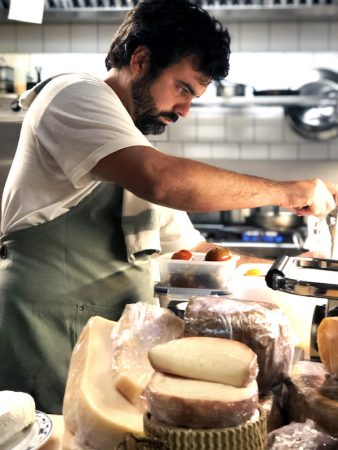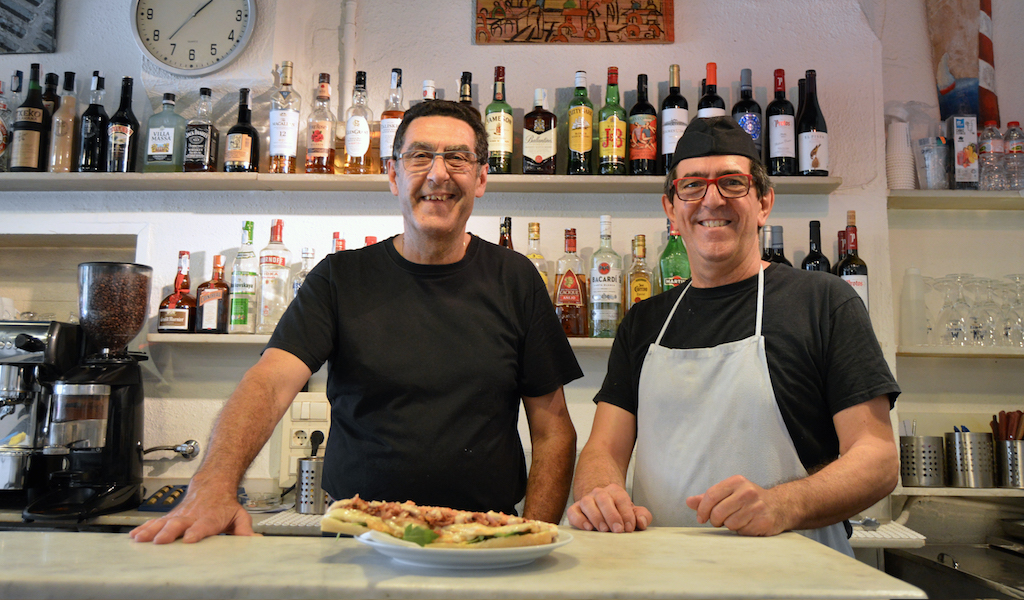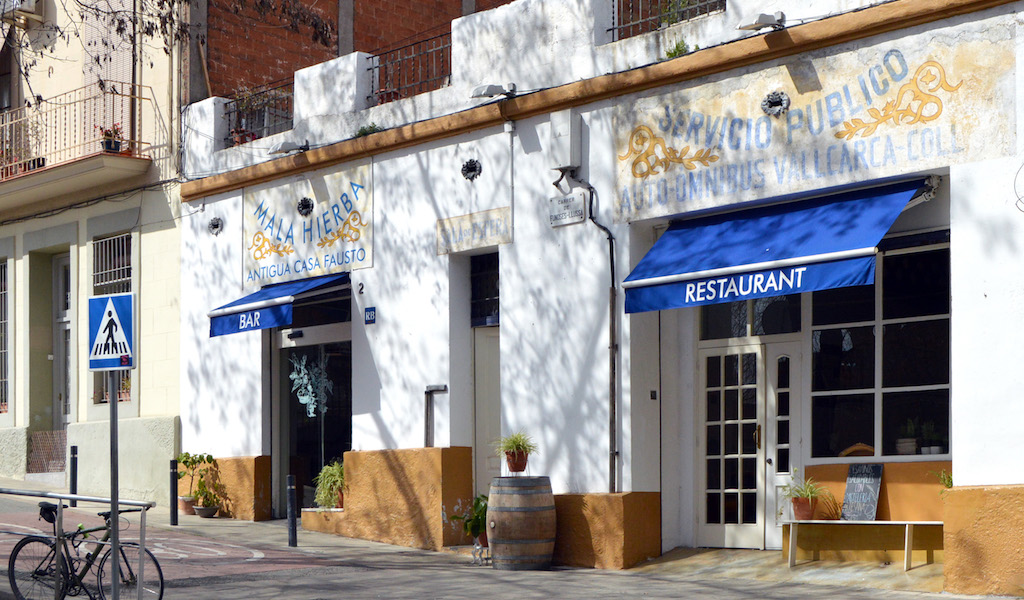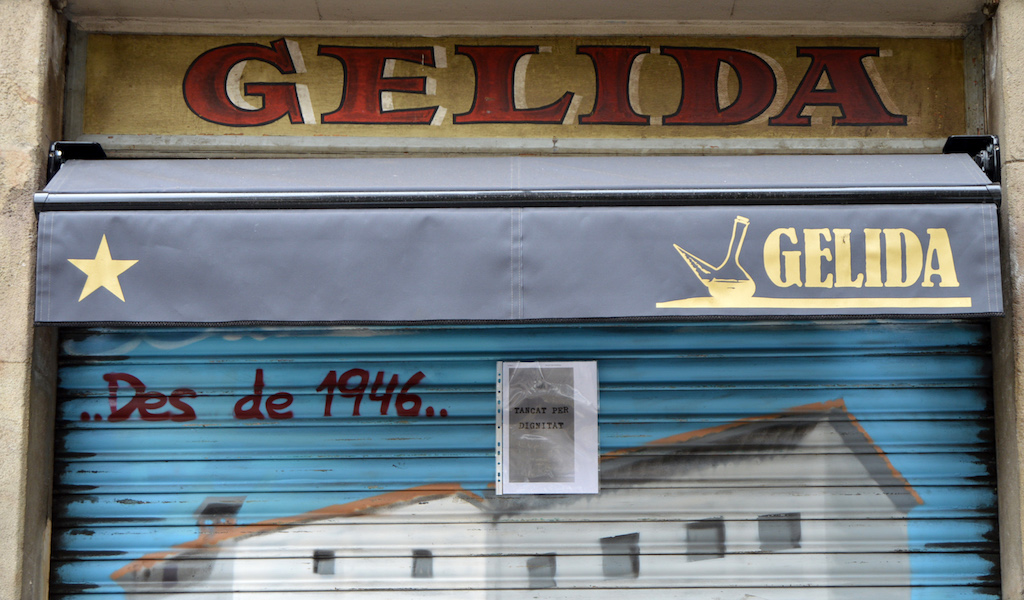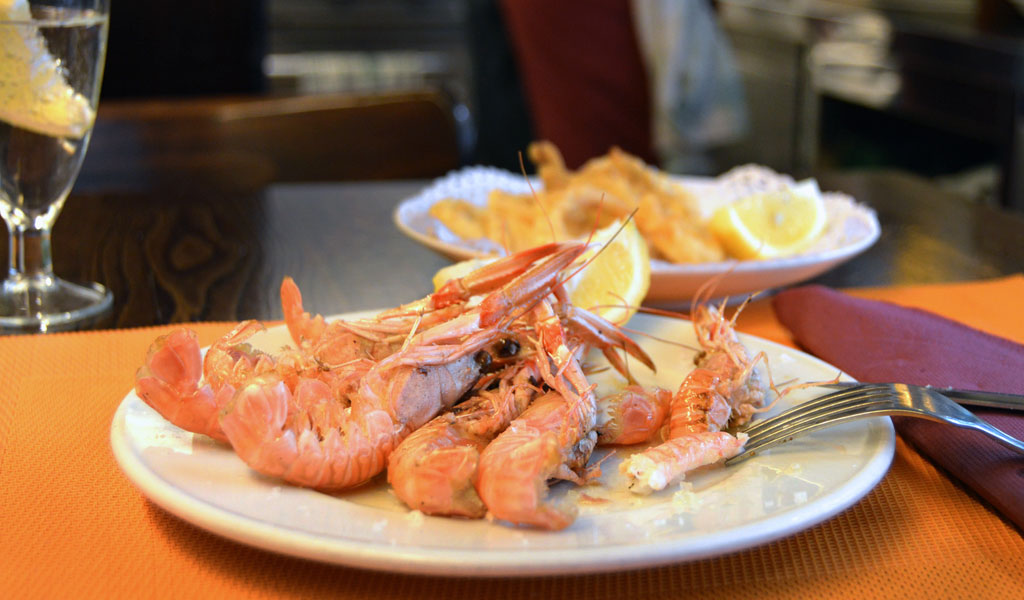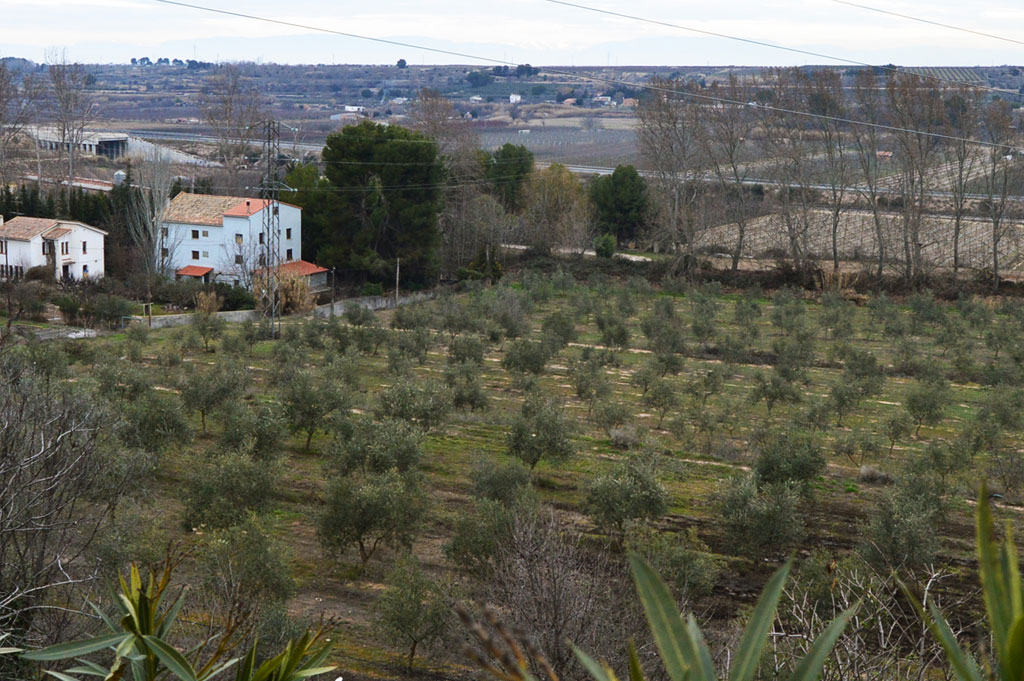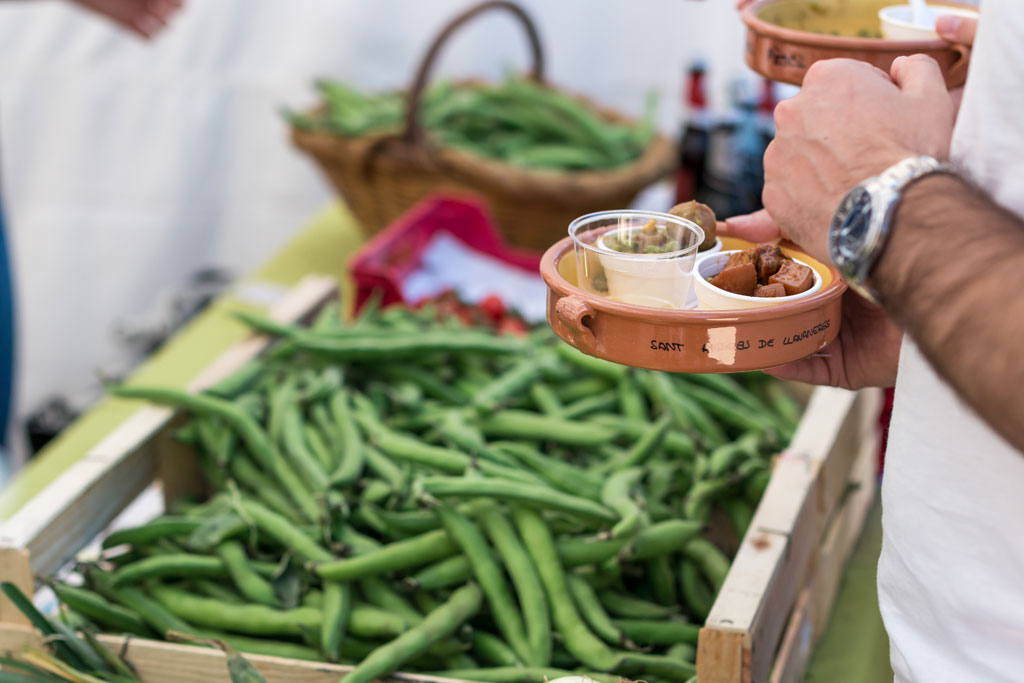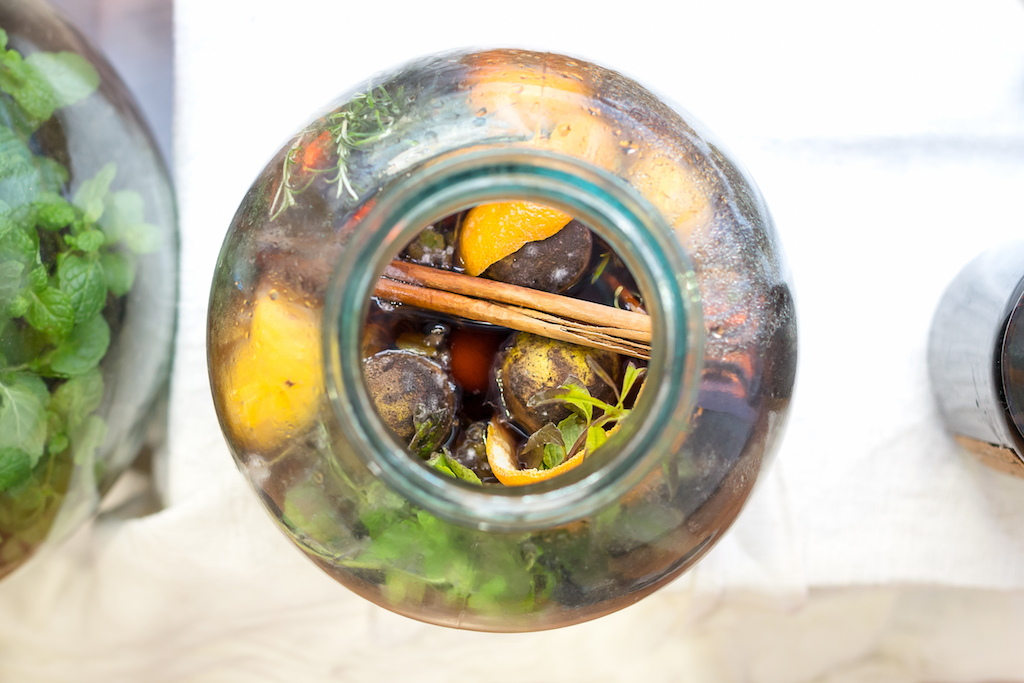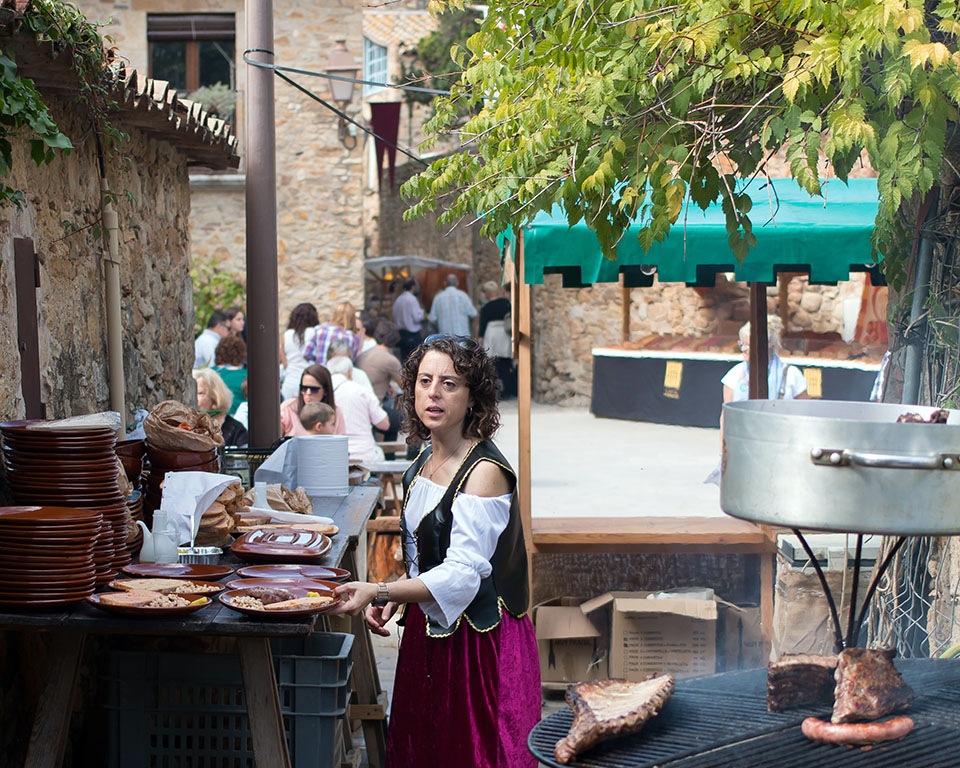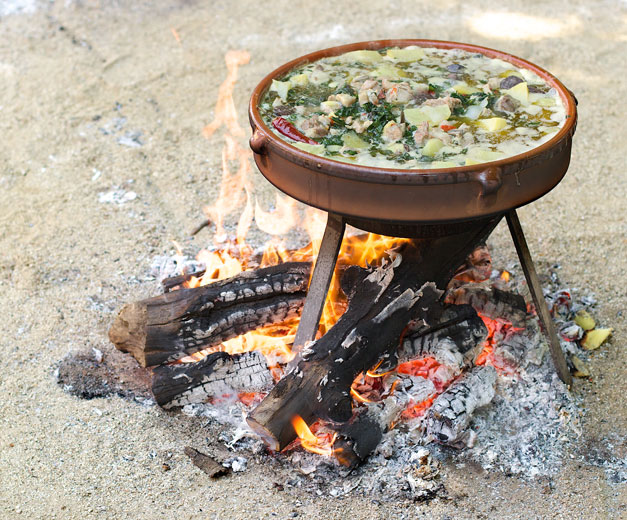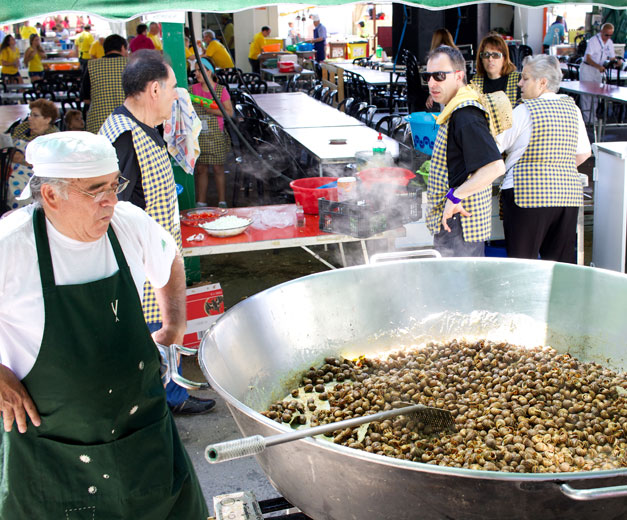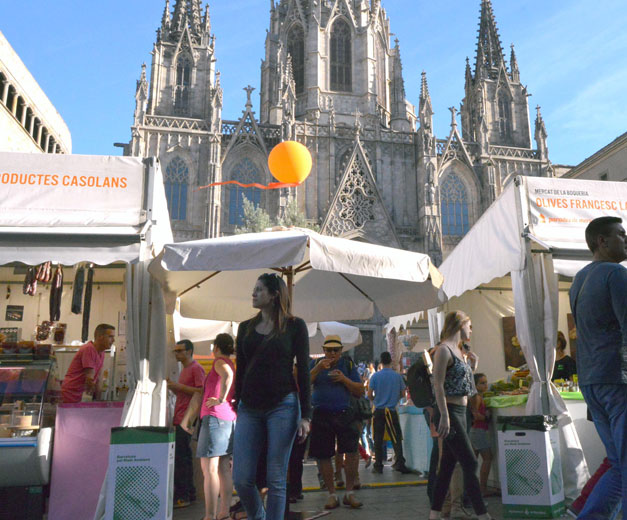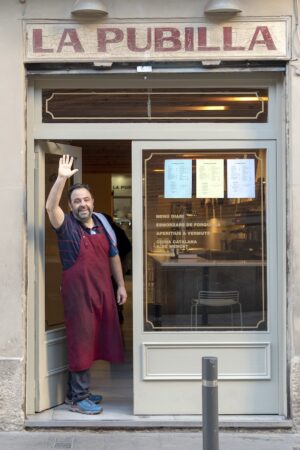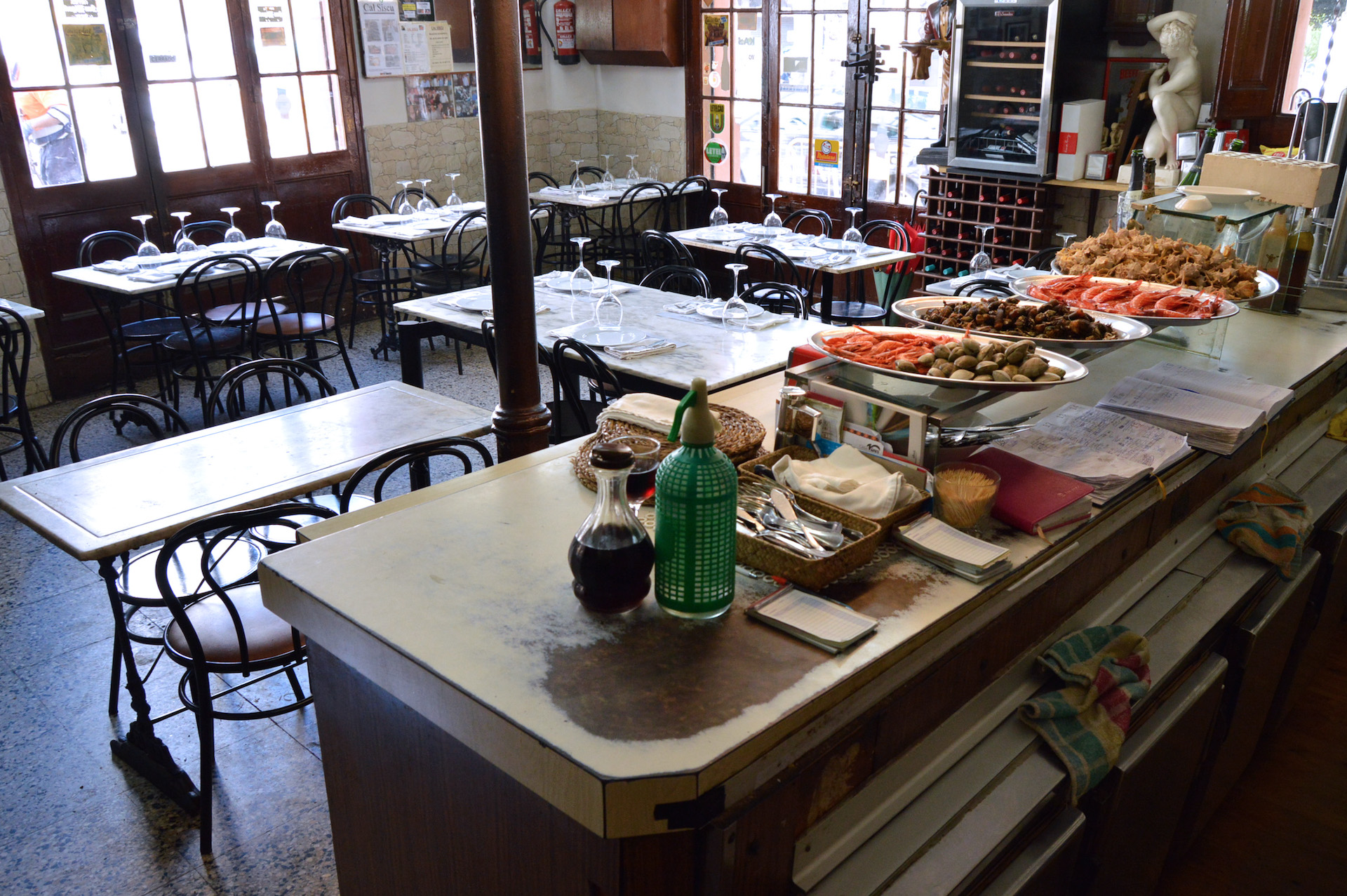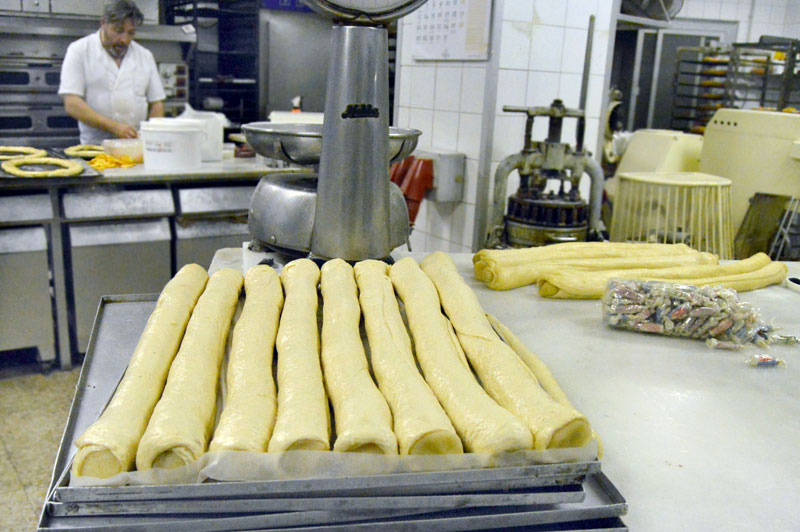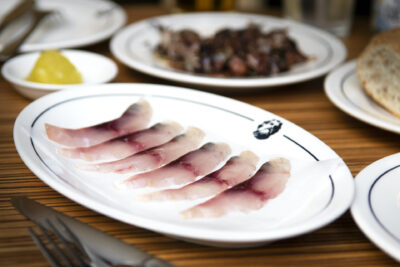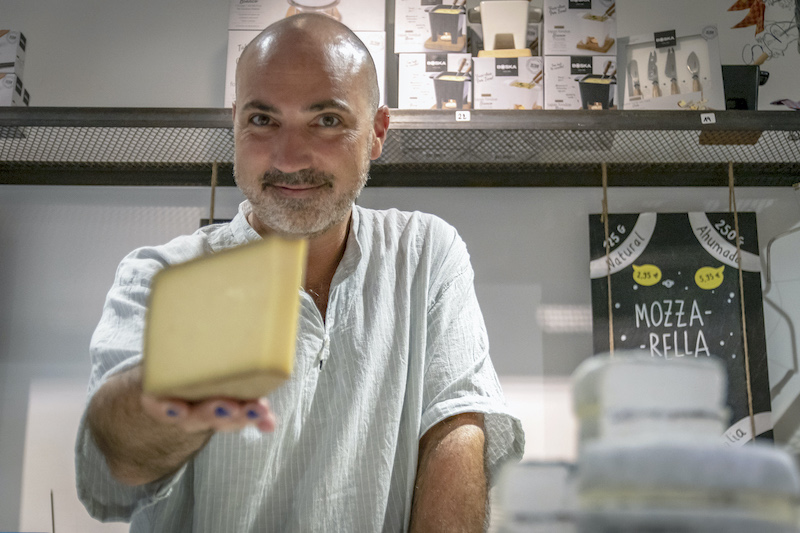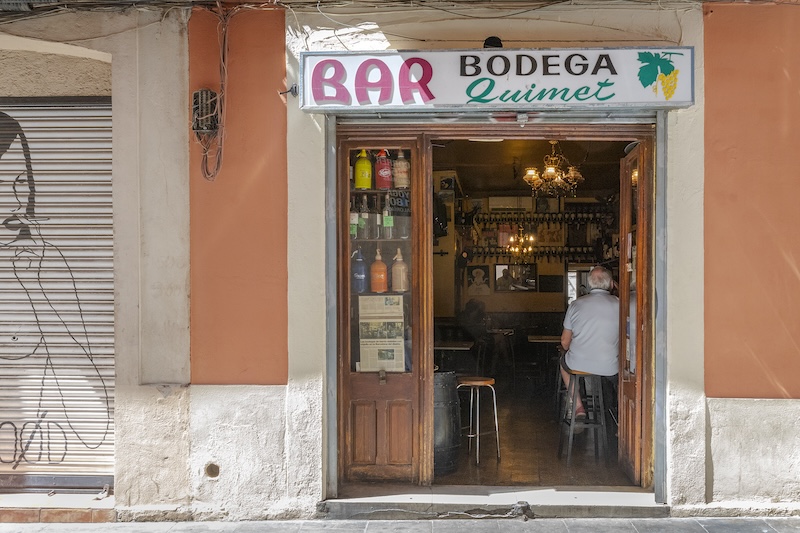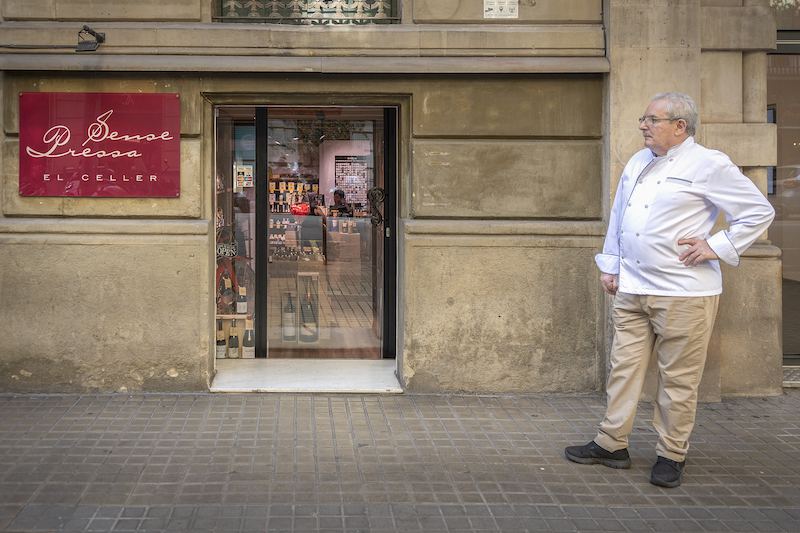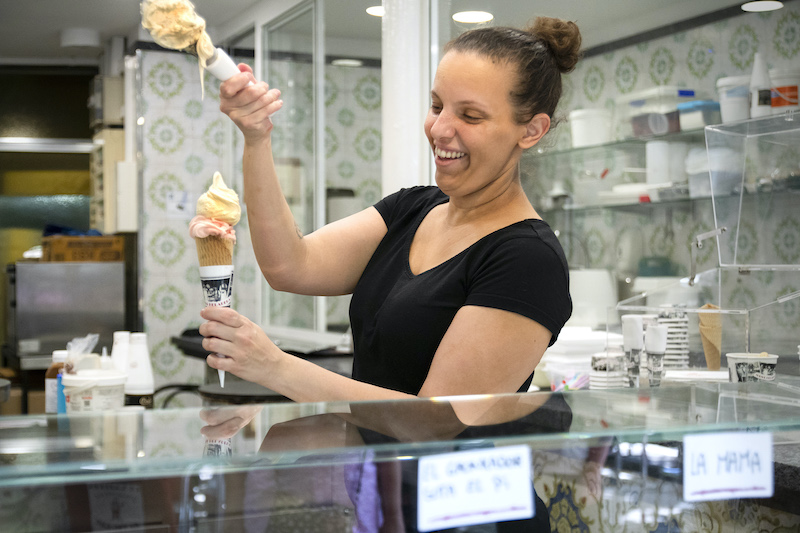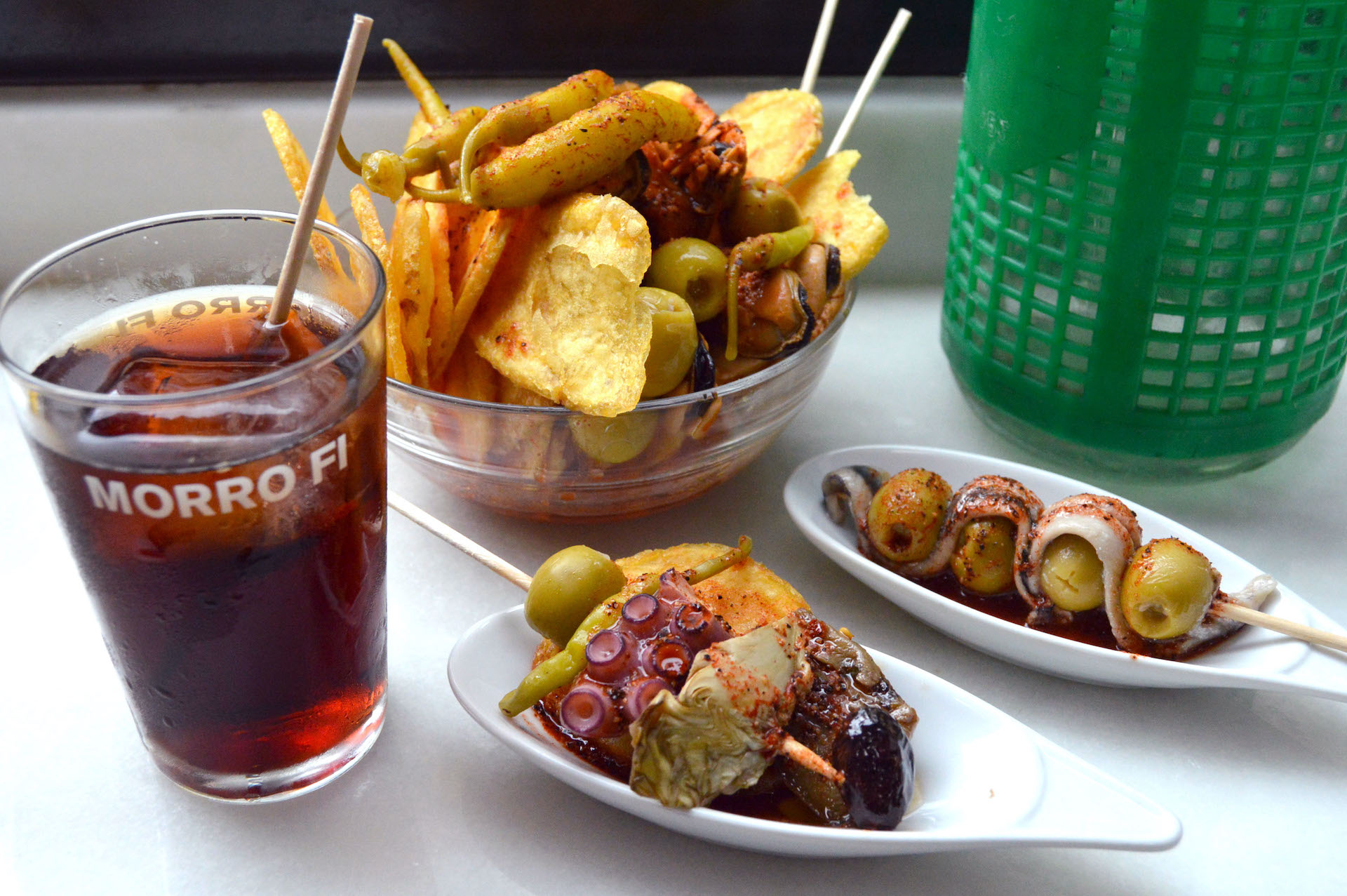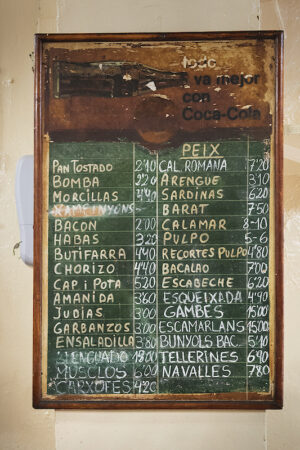We can't find the internet
Attempting to reconnect
Something went wrong!
Hang in there while we get back on track

Barcelona
Barcelona's culinary record
Barcelona today has a well-developed and strongly rooted Catalan culinary scene, something that wasn’t true a few decades back. In that sense, the reclamation of Catalan identity in the post-Franco era has not just been a political endeavor but also a culinary one.
Get the Full Story →Tour Barcelona with Culinary Backstreets®
Upcoming Barcelona Food Tours
discover the city, street by street, bite by bite
Explore Barcelona
Barcelona
Fonda Pepa: Viva La Kitchen
Back in the day, weary travelers in Spain could make a stop at a village fonda, a type of inn or tavern, for a hearty meal and a place to rest their heads. Today, in Latin America, fonda has a more contemporary meaning, including popular restaurants and cantinas serving food and drinks. Both rely on down-home, no-frills fare. But at Fonda Pepa in Barcelona, chefs Pedro Baño and Paco Benítez have taken this concept to new gastronomic heights. The restaurant has the easygoing vibe of a village canteen, with the flavors of a royal kitchen. It was the Covid-19 pandemic that gave the Catalan Pedro and Mexican Paco the last little push they needed to jump into a new personal adventure.
Read moreBarcelona
Berbena: Back to Basics
At first glance, Berbena, a restaurant in Gràcia, resembles a small, pretty tree with dazzling foliage – it offers a sophisticated and complex dining experience. But the restaurant’s delicate attributes, those pretty leaves, wouldn’t be possible without a carefully tended trunk and roots. In short, the basics matter, something that its creator, chef Carles Pérez de Rozas, decided after years spent in high-end kitchens. Carles had a culinary education par excellence: After studying at the prestigious Hofmann School, a culinary institution in Barcelona, he worked at several Michelin-starred restaurants in Catalonia, such as Drolma, Saüc, and Carmen Ruscalleda’s iconic Sant Pau. A job in the restaurant at the Hotel de Ville de Crissier brought him to Switzerland; he then spent a short and intense period in France with the great chef Michel Bras. In Japan, he trained alongside Seiji Yamamoto, in his Tokyo restaurant Nihonryori RyuGin, adding more notches of refined knowledge to his belt.
Read moreBarcelona
Guixot Restaurant: Sandwich Central
For a century and a half, the building housing Guixot has taken on many personalities – though one thing has remained the same: It’s always housed some type of bar that also served food. Now a tapas bar celebrated for its sandwiches, brothers, partners and cheery owners Francisco and José Gutiérrez Murillo have been running the iconic eatery in the Raval neighborhood since 1986. Here we can find some of the more interesting sandwiches of the Old City, along with good tapas and a lunch menu of daily specials. Exuding a relaxed, familiar and friendly atmosphere, the space still keeps an old school look with its marble tables and thin iron columns from the past century dotting the interior. It makes good use of its walls, exhibiting paintings that seem to recall its previous life – and it’s had many.
Read moreBarcelona
Agreste de Fabio & Roser: Good Weed
Up in Barcelona’s hills, in the El Coll neighborhood, where the city ends and the sky is cut by the spiky shapes of the pine trees in Collserola Park, Agreste de Fabio & Roser is sprouting up. Emphasizing sustainability and healthy eating, the restaurant is creating delicious dishes that merge Catalan and Italian traditions with contemporary flourishes. Room manager Roser Asensi and her partner, chef Fabio Gambirasi, created this project (the name means “bad weed” in Spanish) less than a year ago and people are already singing their praises. On a recent visit, we could hear words of admiration from different guests flying around the room over the course of our meal.
Read moreBarcelona
Barcelona Post-Referendum: Difficult to Digest
I used to joke that the only thing binding together Spain is the classic tortilla española, which in Catalonia we refer to as the tortilla de patatas – a neutral name. This potato omelet is one of the very few traditional dishes that is prepared the same way (and equally beloved) throughout Spain’s Autonomous Communities, the regions created after the Spanish Constitution of 1978, a necessary step towards creating a democratic country after the end of Franco’s dictatorship. The fact that this is one of the few dishes we all have in common highlights the significant regional differences of our traditional cuisine, despite our common Mediterranean culinary culture.
Read moreBarcelona
El Bisaura: Fishmonger to Table
Inside Barcelona’s lesser-known Mercat de Les Corts is a small, unassuming bar offering up the bounty of the Mediterranean. El Bisaura opens up shop at 6:30 a.m., serving esmorzars de forquilla (hearty Catalan breakfasts like sausage and beans, tripe stew and grilled cuttlefish) to local workers. At lunch, it serves a more refined seafood menu composed of whatever owner Alfonso Puig gets from Peixateria Anna, the fish stand on the other side of the market. The fish and seafood of the day are always seasonal, local and impeccably fresh – which is no surprise, since Puig is also the owner of the fish stand.
Read moreBarcelona
CB on the Road: Les Garrigues' Olive Oil Boom
In the southwestern part of Catalonia, in the province of Lleida, lies Les Garrigues, where the gray-green foliage of compact Arbequina olive trees stretches across some 20,000 hectares of the soft, dry landscape. This is where one of Spain’s best extra-virgin olive oils is produced. The olive tree has been cultivated in Catalonia since at least ancient Roman times, although it was probably first introduced by the Greeks in 600 BCE. Its cultivation developed alongside other typical crops that flourish in a dry climate – such as almonds, grains and grapes – until growing olives and producing olive oil became the main industry of Les Garrigues in the 19th century.
Read moreBarcelona
CB on the Road: Promoting Peas in Sant Andreu de Llavaneres
“People know about our peas all over the world!” Marc Bertrán exclaimed as he stood, arms crossed, behind a folding table laden with jars of cooked green peas, stacks of pamphlets and a big crock of silky pea hummus with a bowl of crackers, inviting passersby to enjoy a taste of three generations’ worth of dedication. “In the 1950s,” Bertran told us proudly, “our town’s famous dish, Pèsols ofegats a l’estil de Llavaneres” – Peas stewed in the style of Llavaneres – “was featured on the menu at Maxim’s restaurant in Paris.”
Read moreBarcelona
CB on the Road: Santa Coloma de Farners' Ratafia Festival
2015 has been a banner year for the herb-infused liqueur known as ratafia. In the little town of Santa Coloma de Farners, within the Catalan province of Girona, locals have been making this unique libation for centuries, with each family passing down their own version of the drink from one generation to the next. In 1997, within the county’s official records, came a major food discovery – written recipes for three distinct styles of ratafia dating back to 1842, which are now recognized as the oldest of their kind in Catalonia. These handwritten lists of ingredients (along with other culinary notations, savory recipes and home remedies) were discovered in the old notebooks of Francesc Rosquellas, once the proprietor of a café/restaurant in Santa Coloma de Farners whose name had long since been forgotten.
Read moreBarcelona
CB on the Road: Medieval Times in Peratallada
When you live in a medieval town that is as beautifully preserved as the little Catalonian hamlet of Peratallada, you are never too old for dress-up. All year round, these worn stone walls and charming plaças effortlessly take visitors back in time to the 10th century. However, on the first weekend of October, the sights, sounds, smells and tastes of the Middle Ages return to the narrow streets of this historic bastion in full and festive glory.
Read moreBarcelona
CB on the Road: The Catalan Stew Masters of Juneda
Upon the hot and dry plains of Les Garrigues, two irrigation canals cut through an agricultural expanse, diverging first from the ample Segre River, which runs through the center of the city of Lleida, before subdividing again, their meandering channels reaching farther and farther into an otherwise parched plateau. These life-giving tributaries are collectively known as the Canal d’Urgell. Les Garrigues, a region of the Catalan province of Lleida, is a fertile green splotch on an otherwise arid landscape 150 kilometers inland from Barcelona. The irrigation of this region, first conceptualized by the Moors in the 13th century but carried out on a grand scale in the late 1700s, has enabled the cultivation and nurturing of farmland, where a crop of prized arbequina olives and fragrant almond trees now stretches toward the horizon.
Read moreBarcelona
CB on the Road: Lleida’s Gathering of the Snails
Each year at the end of May, more than 12,000 penyistes and 200,000 hungry visitors devour 12 tons of snails in one mere weekend in the city of Lleida, the capital of Catalonia’s interior. The Aplec del Caragol (“Snail Gathering”) is now an internationally known gastronomic event of impressive magnitude. Just under two hours inland from Barcelona by car and an hour by high-speed train, Lleida is an easy trip worth taking, especially in late spring, when friends and families gather to eat and drink with abandon. Typical foods prepared by the colles (gangs) of penyistes (participants) who register together and participate in the Aplec every year (sometimes for decades without fail) include paella, fideuà (a typical pasta preparation), grilled meats and sausages, stews and salads. However, the tender, tasty land snail is the main attraction.
Read moreBarcelona
Mercat de Mercats: Barcelona's Market Festival
La Boquería is undoubtedly one of the most famous markets in the world, but there are 43 markets spread across Barcelona, each with its own unique charms. Once a year, they can be experienced all at the same time, in the same place. From October 17 to 19, 265,000 visitors thronged the square in front of Barcelona Cathedral for the fifth edition of the Mercat de Mercats (Market of Markets) festival, which gathered 40 stalls, 30 local artisan producers, 40 chefs with 17 Michelin stars between them and 14 of the city’s best restaurants. The festival offers an amazing opportunity for locals and tourists to taste the dazzling array of Catalan flavors and to get to know the city’s neighborhood markets.
Read moreDaily Dispatches from the Frontlines of Barcelona
Latest Stories: Barcelona
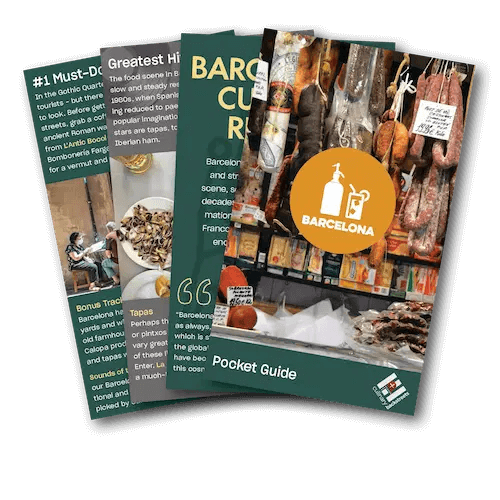
Get Your Free Barcelona Pocket Guide
Introducing our pocket-sized Barcelona guide — perfect for your next culinary adventure. Yours free when you sign up for our newsletter.
Get Your Free Barcelona Pocket Guide
Introducing our pocket-sized Barcelona guide — perfect for your next culinary adventure. Yours free when you sign up for our newsletter.
Immersive Multi-Day Journeys In and Around the World’s Culinary Capitals
Upcoming trips beyond Barcelona
Visual Dispatches from the Frontlines of Local Eating
Barcelona Videos

Discover Barcelona With Culinary Backstreets®

Market Watch: La Boquería Reclaims Its Neighborhood Roots

The Shellfish Catchers of Cambados
Culinary Backstreets® Envoys, Always Searching for the Next Hidden Gem
Meet Our Barcelona Team

Paula
Barcelona Bureau Chief

Senem
Barcelona Tour Leader

Lynda
Barcelona Tour Leader

Pam
Barcelona Tour Leader

Lior
Barcelona Tour Leader

Laia
Barcelona Tour Leader

Daria
Barcelona Tour Leader

Moa
Barcelona Tour Leader

Barcelona: An Eater’s Guide to the City
Part of Culinary Backstreets® “An Eater’s Guide to the City” series, this newly updated and expanded book was created with those who travel to eat in mind.
Visit the shopYour Questions, Answered
Barcelona is cradled on mainland Spain’s northeastern Mediterranean Coast, just a 2-hour drive south from the French Pyrenees, and it is the capital of Catalonia. It is Spain’s major Mediterranean port and commercial center famed for its architecture, art and Catalan cultural heritage.
Barcelona has a wide variety of tourist attractions such as La Sagrada Familia, the Gothic Quarter (Barri Gotic), Casa Batllo and Casa Milà, Park Güell and the long, wide beaches facing the Mediterranean Sea.
The best time of year to visit Barcelona is from earl May to early June. This is when temperatures are the most pleasant, in the low to mid-70s, and a number of activities and festivals kick off the start of summer. Summer itself can be hot and humid, with many folks who live in Barcelona preferring to leave.
The best area to stay in Barcelona for first time visitors is Barrio Gotico (the Gothic Quarter). This is the historical and geographical heart of the city, and one of the best places for lodging if you want to be close to all the important landmarks, attractions and activities – not to mention the tapas bars!
The average annual temperature in Barcelona is about 70 F during the day and just under 50 at night. In January, the coldest month, typically the temperature ranges from 54 to 64 during the day and 43 to 54 F at night.
Barcelona can be quite expensive to visit when coming from the United States, but it is not as expensive as other big European cities. There are many budget offerings that make it possible to visit and keep costs low. Like most big cities, Barcelona has quality food at low prices.
According to the “Safe Cities Index 2019” from the Economist Intelligence Unit (EIU), Barcelona was one of the safest cities in the world in terms of general crime, and overall ranked 19th in personal security and 26th in the world. Pickpocketing and petty theft are an issue, especially in tourist-heavy areas, so it is best to remain cautious.
Barcelona is a well-known destination for foodies. One of the most popular foods in Spain is paella, and here you can have some of the best paellas in the country. Gazpacho, patatas bravas, bombas, croquettes and churros other famous foods in Barcelona, but there is much more discover. You can check out our list of the 10 essential food stops in Barcelona.
Spain is about 86% fully vaccinated, and masks are not required except on public transportation.
American citizens can travel from the United States to Spain visa-free for up to 90-days, with proof of vaccination.
You can fly directly to Barcelona from many locations worldwide. Barcelona Airport is the second largest airport in Spain. It is an international airport. In total, there are 196 airports in 61 countries around the world that have direct flights to Barcelona.
It’s impossible to choose just one place to name the best restaurant in Barcelona! While you can get anything from up-scale to down-home, we recommended starting with our list of the 10 essential food stops in Barcelona.
Many of the city’s streets outlet onto Barceloneta Beach. This is the Miami Beach of Spain: crowded, boisterous and endlessly entertaining. It is safe to swim at Barcelona’s beaches. There are no dangerous currents and rarely big waves.
Barcelona is one of the most popular cities in Europe, and visiting it together with your kids can be a wonderful experience for the entire family! There is so much to do and see in Barcelona with kids, especially because it is such a safe and kid-friendly city.



